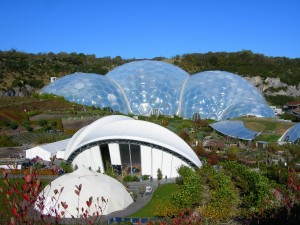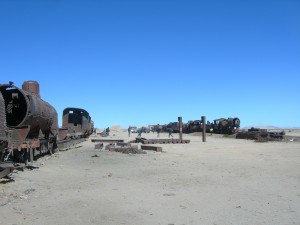In my last post I looked at larger, systems-wide options for reducing greenhouse gas emissions, but those actions may not be possible where you live, or it may require some time to move down those roads. I’m not sure how much time we have to prevent certain climate change effects, and I personally feel better when I can take specific steps to reduce my contribution to greenhouse gas emissions, but learning how best to do that can require a lot of searching. I was disappointed at times with the information that wasn’t easily accessible, and, if I had a quarter for every time I saw the words ‘carpool’, ‘CFL lightbulb’, and ‘recycle’, I could probably buy enough carbon offsets to equal my entire footprint- surely there are other things we can be doing in addition to the big three mentioned above.
How can we be better shoppers?
- At the grocery store, look for paper products that don’t use old-growth wood, since use of old-growth forests a) releases a lot of stored carbon back into the atmosphere, and b) alters habitats that are becoming rarer; choose fewer processed foods since those require more energy to create; buy local foods that don’t have to be transported large distances; and look for environmentally-friendly cleaning products (check thedailygreen.com for a review of those options).
- If you’re thinking of getting a new computer or tv, check out Greenpeace’s ‘Greener Electronics’ rankings (I was very happy to see that my laptop had been a good choice, but they didn’t have my cell phone manufacturer listed).
- When choosing a supermarket or airline or other product/service provider, consider the effect that they have from an environmental and social perspective- greenamerica.org’s Responsible Shopper ranks different companies based upon these criteria and assigns grades for several categories- they don’t always have environmental data for each company, and they don’t list all companies, but it’s a good starting point.
- Think about product longevity– rather than looking for the newest version or the cheapest option, look at what will meet your needs for the longest period of time- and push manufacturers to make longer-lasting goods. Imagine what could be conserved if buttons on remotes were more durable or mechanical pencils contained more graphite.

Let’s think outside the box when it comes to reducing our impact on the environment- when you look at the Eden project today, you wouldn’t know it’s built on the remains of a clay mine
Life-style changes
- Norman et al. (2006) found a significant difference between the energy needed to construct and operate single-family houses and multi-unit buildings. Not everyone wants to live in an apartment building, but even the difference between duplex and detached homes could be important. Within housing construction itself, the drywall and bricks used seemed to contribute a large proportion of energy use and greenhouse gases, so alternative materials may be helpful.
- Hybrids do help- when Samaras and Meisterling (2008) compared the lifecycle emissions from conventional, hybrid, and plug-in hybrid vehicles, hybrid vehicles reduced emissions by more than 30% when compared with conventional vehicles. Plug-in hybrids, which combine a hybrid vehicle with the ability to get electricity directly from the power grid, reduced emissions even more, although the degree was dependent on what powered the electrical grid and how the batteries were manufactured.
- Reconsider what and how much you buy. The common refrain I heard was that the issue is not really what power sources we use, but simply the fact that we use so much, whether it’s for heating or transportation or to create the goods we buy (Van Putten 2008, Dodman 2009, ter Steege 2010).
It’s true that none of the above actions will create an immediate halt to global climate change, but the combined impact of each of us working to reduce our greenhouse gas emissions can influence the intensity and duration of what the world experiences. And I believe that it is far better to act now even if the outcome is not assured.
Works cited:
Dodman, D. 2009. Blaming cities for climate change? An analysis of urban greenhouse gas emissions inventories. Environment and Urbanization 21: 185-201.
Norman, J., MacLean, H.L., and C.A. Kennedy. 2006. Comparing high and low residential density: life-cycle analysis of energy use and greenhouse gas emissions. Journal of Urban Planning and Development 132: 10-21.
Samaras, C. and K. Meisterling. 2008. Life cycle assessment of greenhouse gas emissions from plug-in hybrid vehicles: implications for policy. Environmental Science Technology 42: 3170-3176.
ter Steege, H. 2010. Will tropical biodiversity survive our approach to global change? Biotropica 42: 561-562.
Van Putten, M. 2008. How to save a planet: a user’s guide. BioScience 58: 874-879.

